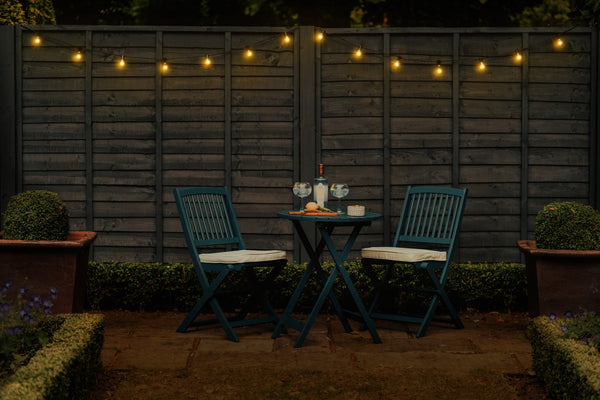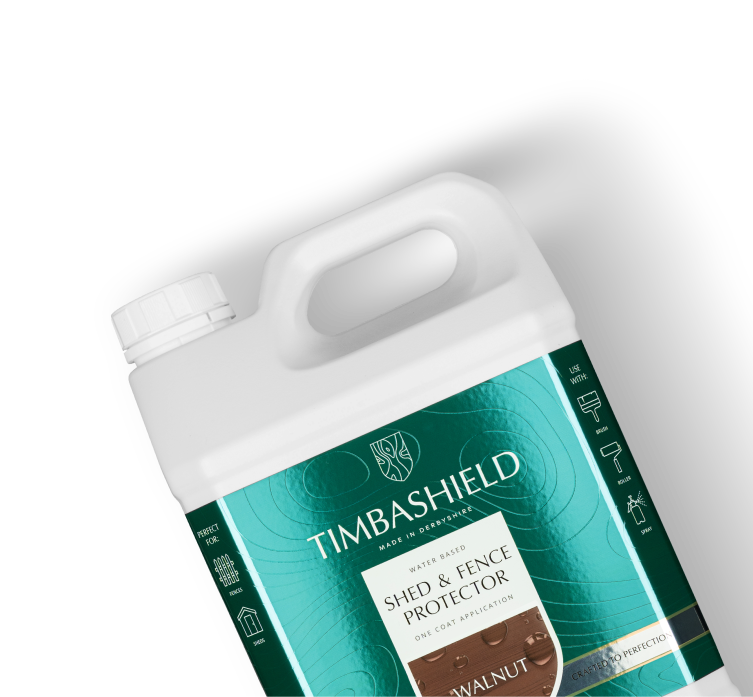
When decorating your fence, it can feel like a long and time-consuming way to spend your weekend. Today, we will be sharing a guide to show you just how easy it is to stain your fence quickly and evenly.
Is it quicker to spray a fence or to use a paint brush?
This is a big question that DIYers always ask. Generally for large areas of fencing, the answer is yes. The application of the stain is not only quicker, but it also ensures every surface is thoroughly coated.
Spraying ensures that the treatment gets into the cracks, grooves, and hollows of your wooden fence, ensuring an even application throughout. It is important to protect as much of the wood’s surface as possible that can be exposed to weathering, to ensure longevity of the outdoor timber.
Using a paint brush is still a good option, but for large areas of fencing it can take longer. When using a brush there is also the risk of leaving brush marks on the surface of the fence, which no one wants.
How do I spray my fence with a stain?
Before you begin to spray your fence, you need to make sure you have the correct materials and tools to do the job. Here’s what you’ll need:
- An airless paint sprayer
- A wire brush or long-handled broom
- Covering material (i.e. a dust sheet or old pieces of cardboard)
- Protective gear including dust mask, glasses, and gloves
- Timbashield Shed & Fence Protector, in your desired colour
Step one: Preparing your fence
Make sure you choose a warm, dry day to treat your fence. Don’t forget to think about the wind too, otherwise you may end up painting more than just your fence (whoops)!
Before you begin spraying, make sure that any peeling or flaking paint is removed. A long-handled broom is a great option to prevent you from bending down in those lower areas. We also recommend using a wire brush for stubborn or dirty areas on your fence, so the product can adhere to these surfaces.
Step two: Covering the working area
You must make sure that you cover under the fence well, a dust sheet or pieces of old cardboard will do. Don’t forget to use tape or something with some weight to ensure your covering material does not move around while you are spraying! The last thing you want is your lovely fence stain all over the surrounding areas.
Tip: Use a piece of cardboard along the top of the fence as another form of shield. This ensures that the stain only coats the fence and nowhere else. Remember to stain the very top of fence- this may be easier with a brush.
Step three: Preparing the stain and sprayer
Shake/mix well. Thorough mixing is needed to ensure a consistent colour throughout the treatment.
Once you have done that, you can fill the sprayer container. Don’t forget to do a test spray on your covering material to make sure you have the sprayer on the right settings for your desired look. Test the colour on an inconspicuous area of the wood to be treated before starting on a larger area.
We strongly recommend that you wear a dust mask, glasses, and gloves when spraying your treatment. This will prevent you from being covered in the product, plus it stops you from breathing in any overspray.
Step four: Spraying your fence
It’s time to stain! Spray at a steady pace, do not rush the job and keep the sprayer at around 25 - 30 cm away from the fence.
We recommend overlapping the stained areas ever so slightly to ensure all coatings become uniform when adding each coat. This technique is a great way of ensuring all gaps are filled in the fence.
Another method worth considering is the cross-coat technique. This method is typically used on uneven surfaces. Begin by spraying from left to right, then top to bottom.
You’ll be done in no time!
And, if you use our Shed and Fence Protector, you’re getting protection from just one coat. Take a look at some of recommended products below.
FAQs about spray application to a fence
How do I stain a fence with gaps?
If you are staining a fence with large gaps, we would recommend using a brush. This is to avoid wasting your precious product! Shop our range of high-quality paint brushes and accessories here.
When is the best time of year to stain a fence in the UK?
The weather in the UK tends to dry up in April up until September time. You are more likely to get a dryer and warmer day in the summer months, so it completely depends on how soon you want to get staining.
It is always worth noting that your fence should be below 15% moisture content. This is so the wood can absorb as much of the wood treatment as possible plus, you don’t want the stain running and leaving a nasty looking finish! If you are not sure if it is dry enough it is better to start staining after a few days with no rain and in temperatures consistently above 5°C.
How do I stain a fence with concrete posts?
The best way to address this is by using old newspapers and securing it with tape around the edges. That way, the concrete does not get coated in your lovely stain!

What to Do with Leftover Wood Stain: Tips for Use and Disposal
Discover smart ways to use, store, or safely dispose of leftover wood stain with our practical, eco-friendly tips.
view this post
The Do’s and Don’ts of Staining Garden Furniture & Fences
Discover the essential do’s and don’ts for staining garden furniture and fences to achieve a long-lasting, professional finish.
view this post
Tackling Mould & Algae: Restoring & Preserving Outdoor Wood
Restore and protect outdoor wood this spring! Learn how to tackle mould & algae and preserve wood with Timbashield’s expert tips.
view this post

